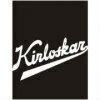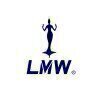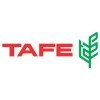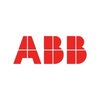Filter interviews by
Scan Projects Interview Questions and Answers
Be the first one to contribute and help others!
Interview questions from similar companies

I applied via Naukri.com and was interviewed in Mar 2020. There were 3 interview rounds.
Interview Questionnaire
2 Questions
- Q1. Fast company work experience & my self introduction, personal skills etc
- Q2. How to feel working in fast company
Interview Preparation Tips

I applied via Company Website and was interviewed before May 2021. There was 1 interview round.
(2 Questions)
- Q1. Regarding about Assembly knowledge
- Q2. Personal round from HR
Interview Preparation Tips

I applied via Approached by Company and was interviewed before Aug 2021. There were 2 interview rounds.

(1 Question)
- Q1. Drum level like single element and three elements
Interview Preparation Tips

Assistant Manager Interview Questions & Answers
Lakshmi Machine Worksposted on 4 Sep 2021
I applied via Naukri.com and was interviewed in Mar 2021. There were 3 interview rounds.
Interview Questionnaire
1 Question
- Q1. All were professional questions wrt to their department
Interview Preparation Tips

I appeared for an interview in Jan 2017.
Interview Questionnaire
3 Questions
- Q1. Tell us about yourself.
- Ans.
I am a recent graduate with a degree in Computer Science and a passion for coding and problem-solving.
Recent graduate with a degree in Computer Science
Passionate about coding and problem-solving
Strong communication and teamwork skills
- Q2. Tell us about your involvement in sports and your activities.
- Ans.
I have been actively involved in sports since childhood, participating in various team sports and individual activities.
Played soccer for 10 years, competing at a regional level
Participated in track and field events in high school, specializing in long jump and hurdles
Currently enjoy hiking and rock climbing in my free time
- Q3. Discussion of company policies about side income and startups.
Interview Preparation Tips
Experience: It was pretty easy and generic. Not much related to my branch i.e. Chemical Engineering. Out of 24, 6 were selected for the next round.
Duration: 1 hour 30 minutes
Round: Group Discussion
Experience: 6 of us were given the choice between 2 topics: online shopping vs. Conventional shopping, and the success of swachh bharat. We selected the prior one after a discussion of 1 minute. We were given 3 minutes to brainstorm and 12 minutes to speak, so 12+3 = 15 minutes total. The mediators, that is the HR lady and the technical gentleman, just listened, did not interfere in our discussions.
Tips: Like any GD, it's crucial to demonstrate leadership without being patronising. And to dominate without being disrespectful to others. While it's ok not to take a rigid stance in a GD, it certainly gets you bonus points if you can convince the other person and "bring them to your side". It's not a debate, so even if you argue, you have to come to a more-or-less unanimous conclusion within the set time so your discussion must have a set direction. Bonus points if you're the one giving the direction.
Duration: 15 minutes
Round: HR Interview
Experience: It was for about 10-15 minutes. The HR lady and the tech gentleman were very chill. They began by asking me about myself. I have a startup of my own so I gave a short intro about myself, my immediate family, my goals and then into my startup. They had gone through my CV so they started asking about my activities in college and what I was doing. I think they were trying to figure out my character and if all of it was genuine. Then I again started talking about my startup, so they finally relented and asked me about it. I explained the idea to them and told them that I would want to continue working on my startup. They told me that it was not in accordance with their company's policy to have an employee occupied full-time in two companies. Then I informed them that my startup was my priority, and we agreed that I would not be a good fit for Thermax.
Tips: Be confident, cool and open during the interview. You are already good if you've progressed to the last stage of the selection process. The interviewer already knows you have flair. What they want to figure out is that whether you are the right fit for their company's culture. If you're not, no matter how good you are, they will not select you. And that's ok.

Senior Engineer Interview Questions & Answers
Tractors and Farm Equipmentposted on 3 Feb 2022
I applied via Walk-in and was interviewed before Feb 2021. There was 1 interview round.
(1 Question)
- Q1. Sourcing and Vendor development related
Interview Preparation Tips

Interview Questionnaire
1 Question
- Q1. Norms of your company
Interview Preparation Tips

I applied via Walk-in and was interviewed in Aug 2021. There were 2 interview rounds.

Hi
Interview Preparation Tips
- Java
Revise oops

I applied via Referral and was interviewed before Apr 2021. There was 1 interview round.
(1 Question)
- Q1. Maintenance phylosophy
- Ans. Depends on equipment running hour, criticality, availability and standby.
Interview Preparation Tips
- Boe
- Energy manager

Senior Engineer Interview Questions & Answers
EMERSON PROCESS MANAGEMENTposted on 19 Oct 2023
(2 Questions)
- Q1. Why do you want to change the job?
- Q2. Where do you want to see yourself in next 5 years?
Tell us how to improve this page.
Interview Questions for Popular Designations
- Executive Interview Questions
- Software Developer Interview Questions
- Business Analyst Interview Questions
- Senior Associate Interview Questions
- Sales Executive Interview Questions
- Associate Software Engineer Interview Questions
- Graduate Engineer Trainee (Get) Interview Questions
- Accountant Interview Questions
- Show more
Interview Questions from Similar Companies
Scan Projects Reviews and Ratings
based on 2 reviews
Rating in categories

Thermax Limited

ABB

Tractors and Farm Equipment

Isgec Heavy Engineering
- Home >
- Interviews >
- Scan Projects Interview Questions






